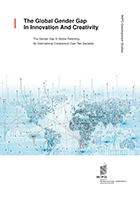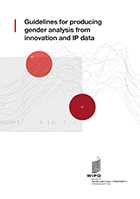Innovation Gender Gap: 4 Initiatives to Narrow the IP Gender Gap in Africa and Arab regions
As nations around the world become increasingly aware of the importance of gender and diversity gaps in innovation, many have implemented policies to reduce these gaps. A panel of representatives from Egypt, Rwanda, Bahrain and Nigeria presented and discussed policies and programs in the African and Arab regions. Learn more about these initiatives!

WIPO and Invent Together held the fourth edition of the IP Gender and Diversity Gaps webinar focusing on the Asia-Pacific Region on May 30 and 31, 2023. Watch the High-Level Policy panel session.
Egypt
The National Council for Women in Egypt (NCW) is the only national independent institution striving for women to get equal footing with men with regard to political, economic, social and cultural rights. In 2017, the NCW launched the National Strategy for Empowering Egyptian Women 2030. By targeting 34 indicators framed in the United Nations’ Sustainable Development Goals, the strategy aims to advance women empowerment around four pillars of action:
- Political empowerment and leadership
- Economic empowerment
- Social empowerment
- Protection.
In addition, Egypt’s Technology Innovation and Entrepreneurship Center has recently launched a Female Entrepreneurship Program to foster digital entrepreneurship among women. The program provides workshops on business development skills to women seeking to develop digital business ideas or integrate digital technologies in their business operations.
Rwanda
Rwanda’s public and private sectors have unveiled recent initiatives in support of women’s participation in science, technology and innovation. At the policy level, the government of Rwanda included women support provisions in its Science, Technology and Innovation Policy adopted in 2020. Some of these provisions refer to, for example, establishing quotas in research projects or specific funding schemes in favor of women’s participation in educational programs across science, technology, engineering, and mathematics (STEM) fields. In parallel, private sector initiatives such as the Rwandan Association for Women in Science and Engineering, are taking steps to upskill women and girls so they can thrive in STEM-related fields.
Bahrain
In the Arab region, Bahrain’s National Gender Balance Model has taken center stage. By setting a framework to mainstreaming considerations on gender equality and women’s needs, the model has served as an action plan to bridge gender gaps across sectors. From developing legislation to re-formulating policies and aligning programs, the model has been guiding Bahrain’s authorities to accelerate progress in the United Nations’ Sustainable Development Goals that impact women’s livelihoods.
Nigeria
Nigeria recently launched a High-Level Advisory Council on Support for Women and Girls. By calling for more inclusion of women and girls in development policies and programs, the council has been developing initiatives to bridge persistent gender equality gaps. One of such initiatives is the National Women’s Economic Empowerment Policy, which aims to enable more women and girls to access opportunities in education, digital innovation and other sustainable development fields. In cooperation with the African Development Bank, Nigeria has also kick-started an Investment in Digital and Creative Enterprises Program (I-DICE) to foster technological entrepreneurship and innovation among young women and men. I-DICE places an emphasis on young women entrepreneurs by nurturing start-ups of the latter across technology and creative sectors.
Do you know of other initiatives or programs in the region that are not listed in this article? Please feel free to contact us and we will be happy to add it!
Related stories

Innovation Gender Gap: 4 Asian-Pacific Initiatives to Narrow the IP Gender Gap
As nations around the world become increasingly aware of the importance of gender and diversity gaps in innovation, many have implemented policies to reduce these gaps. A panel of representatives from the Philippines, Singapore, People’s Republic of China and India present and discuss their respective national policies and programs.

Gender equality: Japan's effort to leave no one behind
Asia’s rapid economic growth is well documented throughout the years. Despite this strong growth, female inventors seem to be left behind. Read on to find out how Japan is trying to address this innovation gender gap.

4 Indicators to Measure Gender Gap in Innovation
There are several measures of gender gaps in innovation. However, choosing the “right” indicator depends on the purpose. Here are some suggestions on what to consider when choosing the type of indicator.
Related resources

The Global Gender Gap in Innovation and Creativity: An International Comparison of the Gender Gap in Global Patenting over Two Decades
This report analyzes women’s participation in international patent applications between 1999 and 2020 and finds that women are involved in only 23% of all applications, representing 13% of all inventors listed.

Guidelines for producing gender analysis from innovation and IP data
Understanding how women and men can access and use the intellectual property (IP) system equally is key to ensuring that their ingenuity and creativity translates into economic, social and cultural development. This short guide summarizes best practice for producing innovation and IP gender indicators.